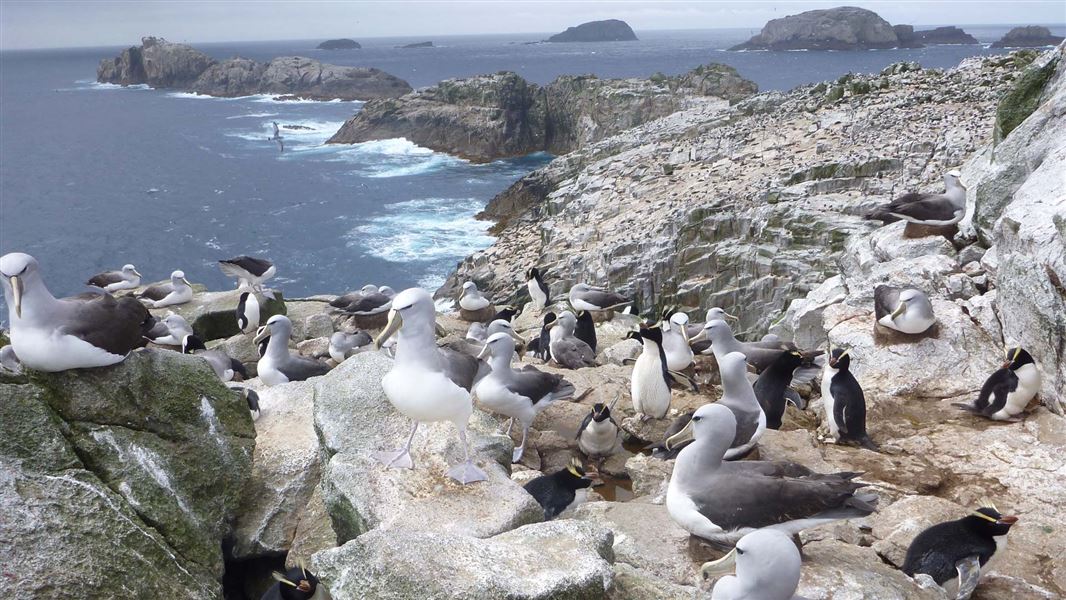They are the most remote and least visited of New Zealand's subantarctic islands, having no safe anchorage or easy landing sites.
The Bounty Islands/Moutere Hauriri Marine Reserve was created in 2014.
Geography
View a map of the Bounty Islands.
Unlike the Aucklands, Campbell and Antipodes, which are primarily volcanic in origin, the Bounties are made of igneous rock, pushed up from the floor of the ocean.
The Bounty Islands are divided roughly into three groups: Main, Centre and East. Their total land mass is only 135ha, with Depot Island being the largest in the group at 800m in length and 88m at its highest point.
The Bounty Islands have virtually no soil or vegetation as they are frequently washed clean by rain and spray from the often huge waves which crash into them.
Birds
Despite the hostile conditions, the islands manage to live up to their name during the summer breeding season by hosting thousands of seabirds, including the world’s rarest cormorant, the Bounty Island shag, of which there are only 500-600 individuals. The Bounty Island shag is one of the few birds present on the island throughout the year.
The islands are also the primary breeding area for erect-crested penguins (whose only other breeding site is the Antipodes group) and Salvins mollymawks (75,000 pairs estimated to be breeding here with several hundred pairs breeding on the Snares). Antarctic terns, fulmar prions, Snares cape pigeons and Southern black-backed gulls also nest here in lesser numbers.
Seals
After being hunted to near extinction seals have started to make a comeback in recent years. The Bounty Islands are, once again, one of the main bases for the New Zealand fur seal in the subantarctic. In 1992 the population was estimated at 20,000.
Invertebrates
A diverse community of terrestrial invertebrates inhabits the Bounty Islands. Their existence depends on the debris generated by the seabirds and seals. The insects include a flightless beetle Bountya insularis, whose nearest relatives are in Australia and South America; an endemic weta Ischyroplectron isloatum; and two moth species Proterodesma turbotti and a new species of Reductoderces. Two spiders have been discovered so far: Pacificana cokayni, a Bounty Island endemic, and Rubrius mumosus.
Plants
Until 2004, terrestrial plant life at the Bounty Islands was thought to have been restricted to lichens. Then, in November 2004, an expedition discovered Cook's scurvy grass Lepidium oleraceum – the group's first vascular plant.
History
The Bounty Islands were discovered and named by Captain William Bligh of the British naval ship 'Bounty' in 1788, just months before the infamous mutiny.
In the early 19th century hunters decimated the large population of fur seals on the islands. The first two years of sealing on the Bounty Islands saw 50,000 seals killed. By the early 1830s just a handful were left.
There were no known shipwrecks on the Bounty Islands, although a castaway depot was established on Depot Island in anticipation of such an event. Nothing remains of the depot today.
Bird and wildlife watching
Each of New Zealand's subantarctic island groups boast a unique collection of plants and animals, many of which are endemic, meaning they are not found anywhere else in the world. The location of the islands, together with their isolation, have contributed to their diverse and distinctive flora and fauna.
